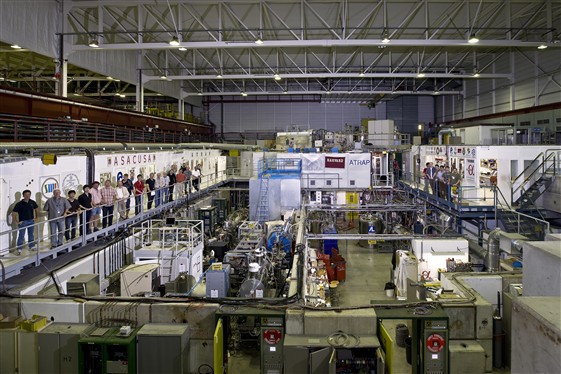

Detail of the AD experimental hall.
The AD experiments
Three experiments are currently installed in the Antiproton Decelerator's experimental hall:
- ALPHA "Antihydrogen Laser PHysics Apparatus",
- ASACUSA " Atomic Spectroscopy and Collisions using Slow Antiprotons" and
- ATRAP "Cold Antihydrogen for Precise Laser Spectroscopy".
ALPHA is the successor to an earlier experiment, ATHENA "Antihydrogen Production and Precision Experiments".
The goal of ALPHA and ATRAP is to produce antihydrogen in traps, by combining antiprotons delivered by the AD with positrons emitted by a radioactive source.
Antihydrogen atoms were first observed at CERN in 1995, and later (1997) at Fermilab. In both cases they were produced in flight, that means they moved at nearly the speed of light, i.e. much too fast to allow precise measurements on any of their proprieties! They made unique electrical signals in detectors that destroyed them almost immediately after they formed.
The idea at the AD is to produce slow antihydrogen atoms and store them into "traps", allowing extremely accurate comparisons of the properties of hydrogen and antihydrogen. In 2002 the ATHENA and ATRAP experiments took the first step when they made large numbers of antihydrogen atoms for the first time. In 2010, ALPHA went a step further with the first successful trapping of the neutral antihydrogen atoms.
ASACUSA, on the other hand, synthesizes "exotic" atoms, in which an electron is replaced by an antiproton. Precise laser spectroscopy of these exotic atoms is expected to reveal lots of information on the behaviour of atomic systems.

